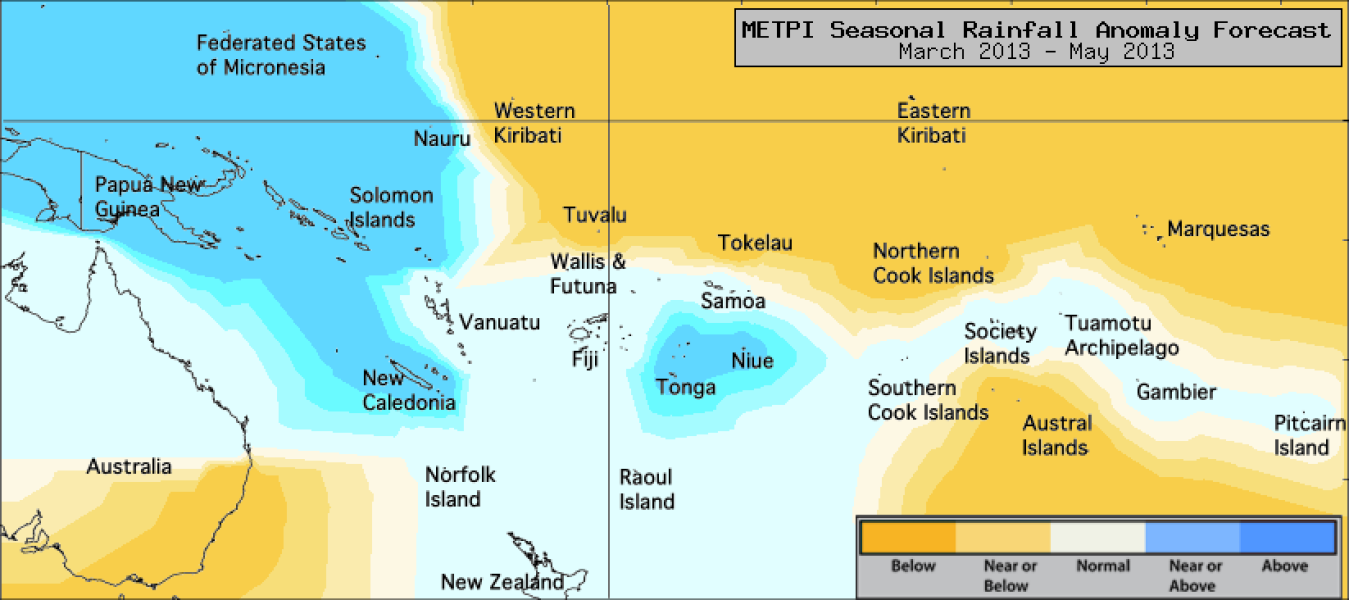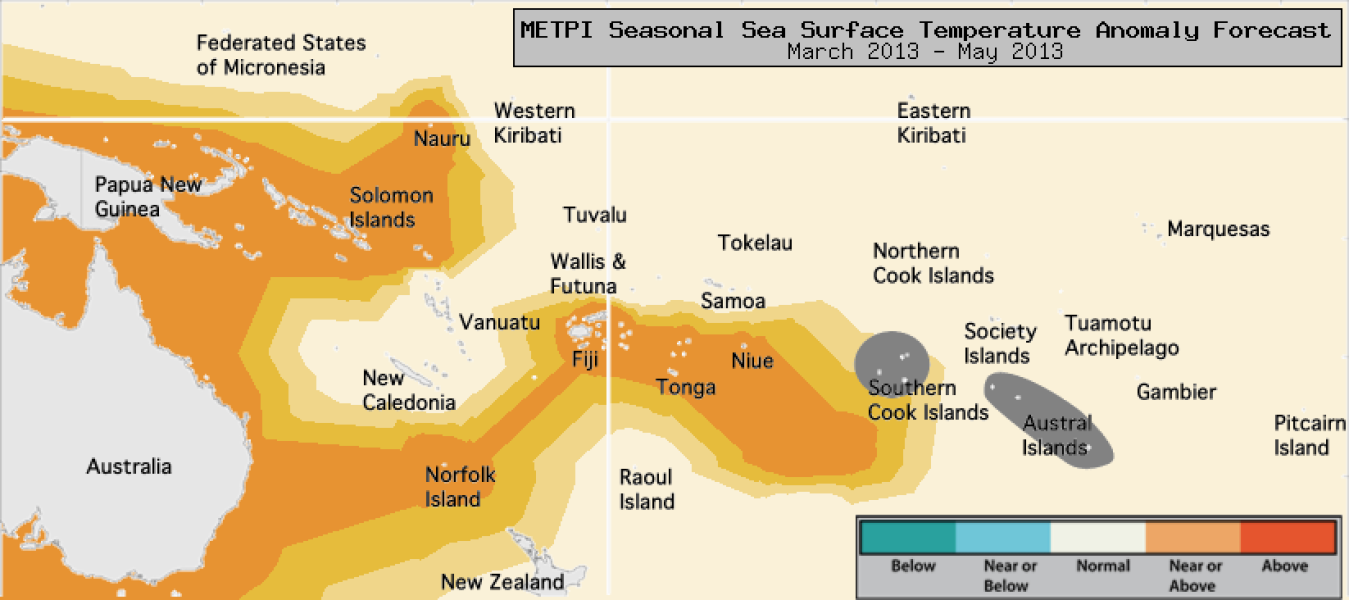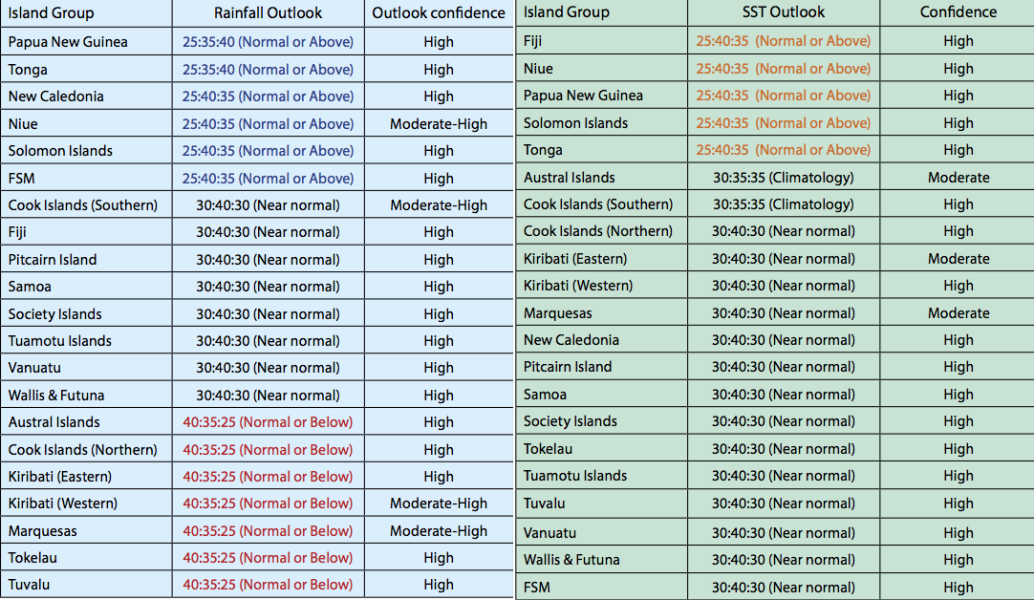The tropical Pacific is still slightly cooler than normal along the Equator to the east of the Dateline, and warmer to the west, but the amplitude of the anomalies has weakened compared to last month.
The dynamical models indicate that the SPCZ will be situated slightly south of normal to the west of the Dateline in March – May 2013, while east of the Dateline it will be in a near-normal position.
Near or above normal rainfall is forecast for Papua New Guinea, Tonga, New Caledonia, Niue, the Solomon Islands and the Federated States of Micronesia.
Normal or below normal rainfall is forecast for the Austral Islands, the Northern Cook Islands, Eastern Kiribati and Western Kiribati, the Marquesas, Tokelau and Tuvalu.
Near normal rainfall is expected for Fiji, the Southern Cook Islands, Pitcairn, Samoa, the Society Islands, the Tuamotu Archipelago, Vanuatu and Wallis & Futuna.
The weak La Niña pattern that was evident in the SST forecasts from the global models last month is no longer present, but generally warmer than normal SSTs are forecast for the western Pacific.
Near normal or above normal SSTs are forecast for Papua New Guinea, the Solomon Islands, Fiji, Niue and Tonga. No clear guidance is offered for the Austral Islands and the Southern Cook Islands. Normal sea surface temperatures are expected elsewhere.
The confidence for the rainfall outlook is moderate to high. The average region–wide hit rate for rainfall forecasts issued in March is 62%, one point lower than the long–term average for all months combined.
The SST forecast confidence is high across the region except for the Marquesas, Eastern Kiribati and the Marquesas, where uncertainty is greater.



